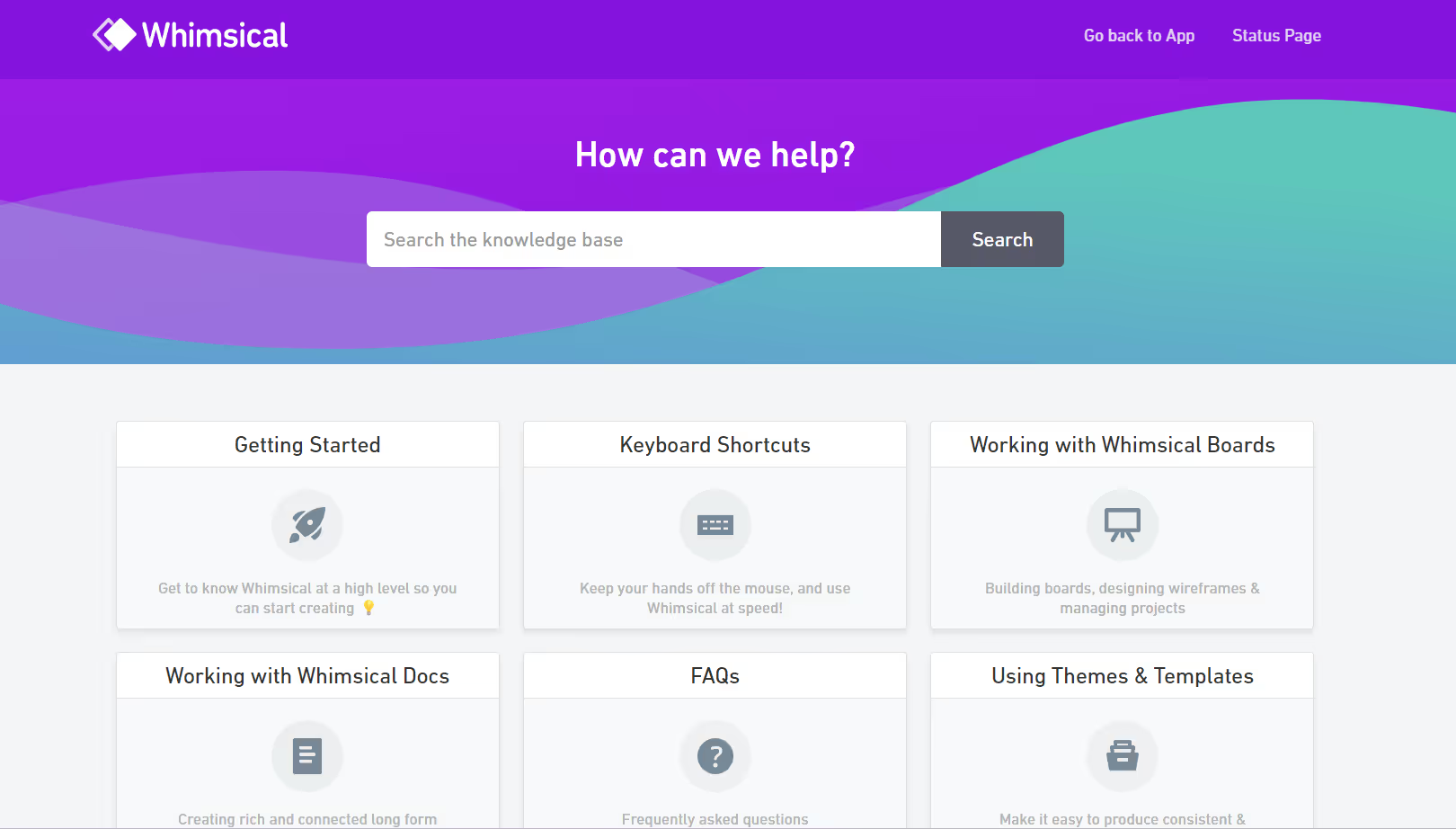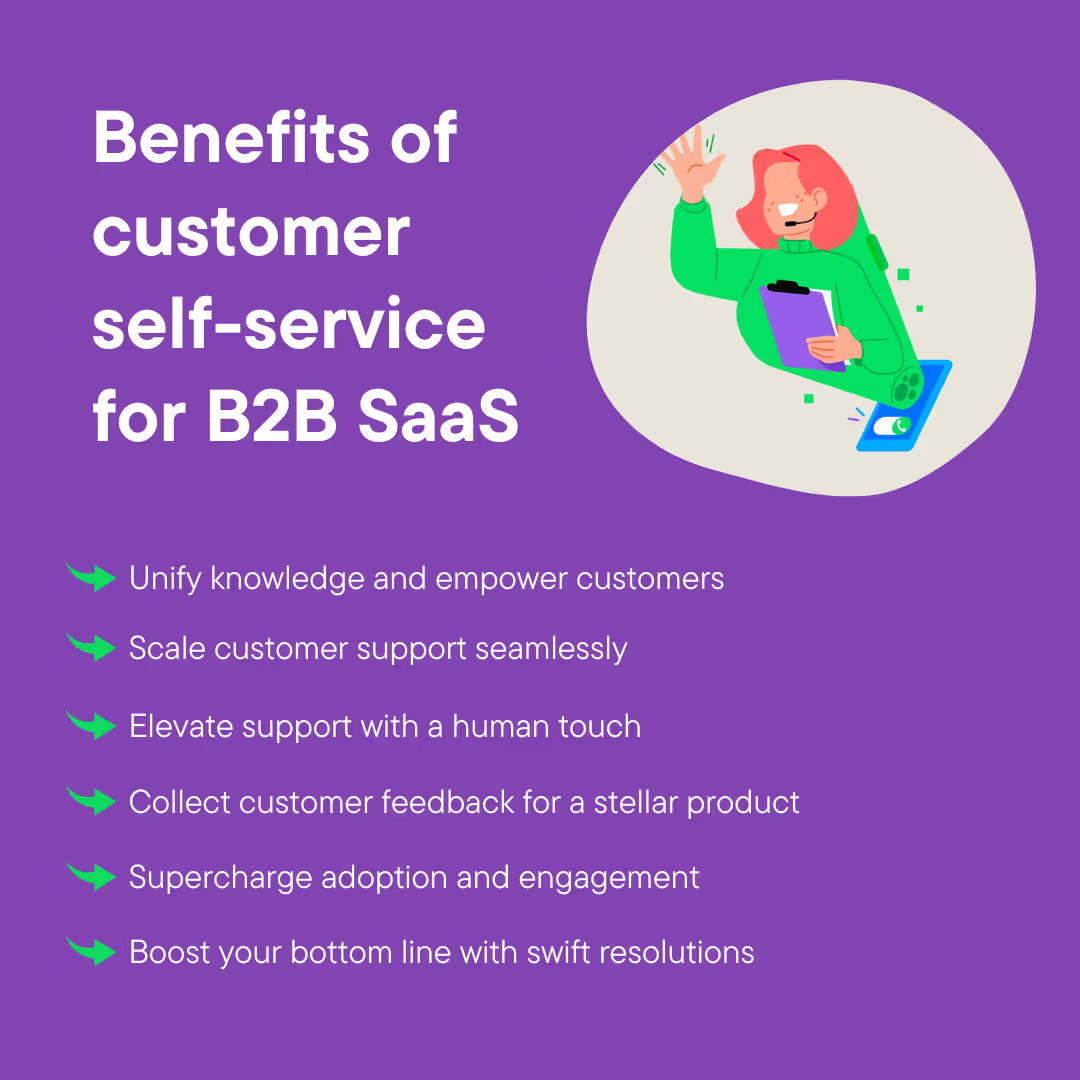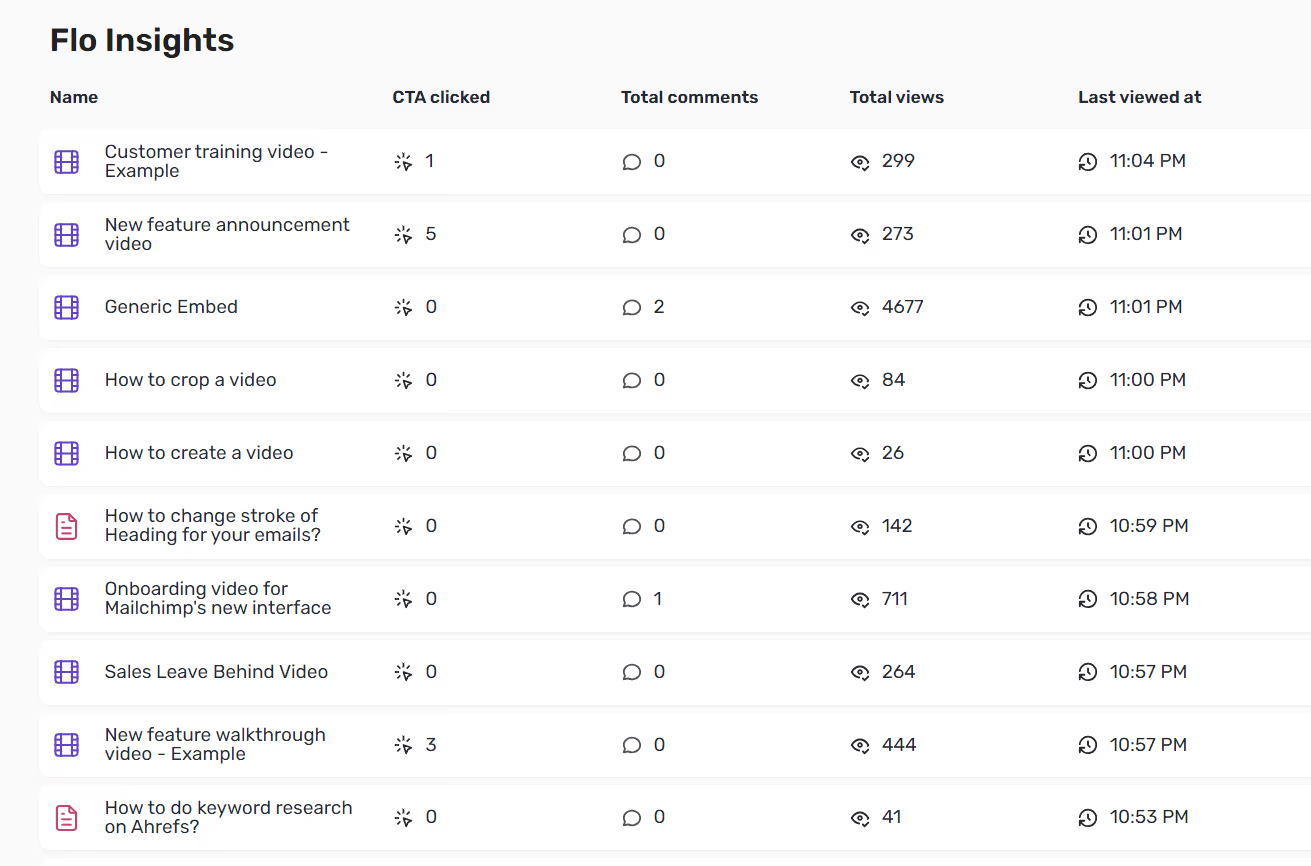Let's face it: traditional customer support can feel like a marathon through a maze of endless tickets and long hold times.
But there’s a new player in town changing the face of B2B SaaS customer support.
You might have heard of… 🥁
Customer self-service!
Customer self–service can transform your customer experience and empower users to take the reins. It delivers answers and troubleshoots problems at lightning speed, helping users effortlessly navigate your product and experience its full potential with minimal effort.
Not just that, the self-serve support model allows you to say goodbye to the avalanche of support tickets and let your team breathe.
We created this guide to explore how customer self-service flips the script—putting the power back into the hands of customers and letting CS teams shine as heroes.
Customer self-service is a customer marketing strategy that empowers customers to find solutions to their problems on their own. It involves providing customers with access to information and tools that enable them to resolve their queries without having to contact customer support.
Unlike traditional support channels like raising a ticket or calling an agent, a self-service customer support model enables users to solve issues and answer questions on their own, using knowledge bases, FAQs, chatbots, and other self-help resources.
So, if you’re a product manager having a busy day and get stuck somewhere in Whimsical, you can jump to their self-help articles, run a quick search, and find the information to tackle the roadblock.
You’ll probably complete these steps in under five minutes!

If you’re still juggling with the question of whether you need a good self-service model, here are six reasons to lead you to a convincing decision:

With a self-service customer support channel like a knowledge base, you can create a centralized hub of information accessible to users anytime, anywhere. It will be the go-to source for product details, troubleshooting steps, policies, and more.
This not only ensures everyone is on the same page but also cuts down on repetitive inquiries flooding your support team. Plus, it’ll guide your customers in different time zones while you enjoy a good night’s sleep.
What’s more, it’ll also act as a single source of truth, bringing your users and employees on the same page.

As your business grows and your customer base expands, the pressure to provide exceptional customer support multiplies. Without the right systems, managing the influx of support tickets can quickly become overwhelming for your team. This is where self-service truly shines.
With a robust self-service model, you can enable customers to answer queries on their own, minimizing the need for human intervention. Lower support tickets mean your team ensures customers receive the attention they deserve.
Automating routine queries—think password resets or order tracking—liberates your agents to concentrate on high-level support where their expertise shines. Response times decrease, service quality improves, and the risk of human error diminishes.
By blending the efficiency of self-service with the empathy of human interaction, you strike the perfect balance to exceed customer expectations.
Unlock valuable insights by analyzing user search queries and FAQ requests. These nuggets of information provide a window into customer needs and identify gaps in your product or service.
Armed with this data, you can fine-tune your offerings and enhance the customer experience. Besides, tracking behavior and preferences will help you identify areas for improvement and deliver products that truly resonate.
Self-service customer support isn't just about issue resolution; it's an opportunity to maximize product adoption and engagement. Offer customers comprehensive product information, insider tips, and expert advice.
By empowering them to explore your product's full potential, you foster loyalty, advocacy, and long-term satisfaction. It's customer marketing 101!

No more waiting on agents or navigating complex escalation paths. With customer self-service, resolutions are swift, and dependencies are reduced. Customers can take charge of their own support journey, resolving issues at their own pace.
Faster resolutions = more satisfaction + higher retention = more referrals.

Let’s get down to business: we’ll discuss the six most pressing problems holding you back from delivering stellar self-serve support. And we’ll share the right solutions to overcome these challenges.
CS teams often struggle to identify knowledge gaps because of a lack of comprehensive data sources to get a holistic view of customer needs. Customer interactions and feedback may not capture all the nuances and intricacies of knowledge gaps.
Besides, customer needs and pain points evolve over time, and customer success managers need to actively monitor and stay ahead of emerging knowledge gaps.
There’s also a possibility that some knowledge gaps go unnoticed if customers don’t actively reach out to support or provide feedback. This makes it more challenging for CS executives to address them proactively.
Maintaining customer productivity through self-service resources is another key challenge for customer success teams.
Striking the right balance between simplicity and comprehensiveness of content is tricky. If the content is overly complex, it can confuse customers and disrupt their flow. On the flip side, if the content is too simplified, it may not provide enough guidance to solve issues quickly.
Besides the quality of information, if the content is incomplete or outdated, it can lead to frustration and wasted time for users. All these points can lower customer productivity, resulting in dipping satisfaction levels and stifling your competitiveness.
Another major challenge facing customer success teams is the inability to provide optimal search and easy access to information within self-serve resources.
One of the primary hurdles is the vast amount of content that SaaS companies typically have. Managing and organizing this content in a way that facilitates quick search and navigation can be tricky.
What’s more is that users may use different terminologies or have specific contextual needs. This complicates the framework to match their search queries with relevant content. Insufficient metadata, tagging, and categorization in content makes it even difficult to deliver accurate search results and smooth navigation.
It's almost like trying to find a needle in a haystack—but with a magnifying glass that doesn't work!
Making the self-service experience consistent across all touchpoints can be equally daunting. To maintain cohesiveness, CS teams need dedicated content creation and design resources. They might also need dev support to create a uniform user interface.
Plus, different customers may have varying preferences in terms of content format, language, or navigation style. This makes it more challenging to cater to diverse user expectations and provide a consistent experience across the board.
Planning regular iterations and updates for self-service content is a common pain point for customer success teams.
Resource constraints often come into play, as teams may have limited bandwidth and competing priorities—making it difficult to allocate dedicated time and personnel for continuous content improvement. And finding a middle ground between creating new content and maintaining existing resources can also be difficult.
On top of that, teams may face internal resistance or complacency, resulting in a lack of urgency or motivation to regularly iterate and update self-service content.
Measuring the effectiveness of self-serve content also poses a challenge. Limited analytics and tracking capabilities can hinder your ability to gain insights into customer behavior, engagement, and satisfaction with self-service resources.
Without robust analytics tools, it becomes difficult to attribute specific customer outcomes solely to self-serve content. Users often interact with multiple support channels throughout their journey, making it challenging to isolate the impact of self-service content.
Quantifying the direct impact of self-serve content on support ticket reduction or customer satisfaction scores requires establishing reliable measurement mechanisms that capture the true value of your self-service model.

Customer self-service is the game-changer that SaaS companies have been waiting for. It puts the power back in the hands of customers by helping them understand your product better without relying on support teams to hand hold them at every step.
The bottom line: by embracing self-service, you can elevate the customer experience and streamline your support operations—talk about winning!
Tools like Floik make it easy for you to step into this new era of customer service excellence and educate users meaningfully. Test drive Floik to transform your customer support resources and build a powerful self-serve engine.